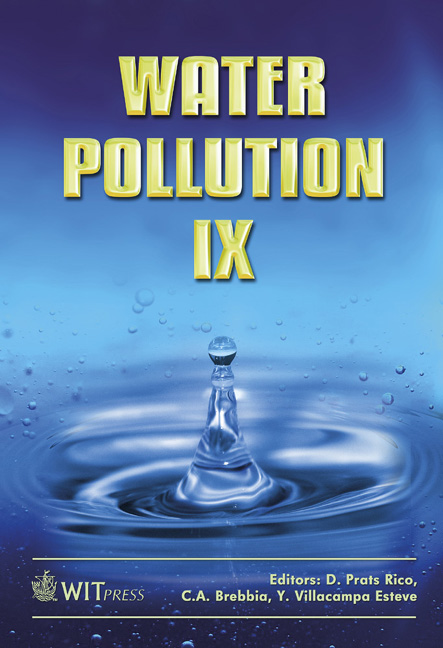A Comparative Study Of Two Groundwater Treatment Pilot Plants
Price
Free (open access)
Transaction
Volume
111
Pages
9
Page Range
149 - 157
Published
2008
Size
327 kb
Paper DOI
10.2495/WP080151
Copyright
WIT Press
Author(s)
C. Podaru, C. Danielescu, D. Sonea, A. Pacala, I. Vlaicu, C. Cosma, G. Burtica, F. Manea & C. Orha
Abstract
This paper reports comparative results of two pilot plant technologies applied for iron and manganese removal from groundwater as part of the drinking water treatment. The first technology (FOF) consisted of a two step filtration by using Romanian natural zeolite of two granulations, and ClO2 as an oxidant and disinfecting agent. ClO2 injection was split between two columns filled with two different granulation of Romanian zeolite used as filters. The second technology (OFMU) consisted of ClO2 oxidation, one step filtration by using Romanian natural zeolite, and microfiltration-ultrafiltration. The first technology achieved good performance. The residual concentration of iron and manganese decreased below the allowed maximum concentration (0.2 mg*L-1 for iron and 0.05 mg* L-1 for manganese). The second technology indicated a good performance only for iron removal, while the residual concentration of manganese was over the allowed maximum concentration. Keywords: groundwater, zeolite, ClO2, microfiltration-ultrafiltration, iron, manganese. 1 Introduction Groundwater has been used for household, livestock and irrigation since the earliest times [1]. The natural chemical quality of groundwater is generally good, but high concentrations of certain constituents can cause problems [2].
Keywords
groundwater, zeolite, ClO2, microfiltration-ultrafiltration, iron, manganese.





